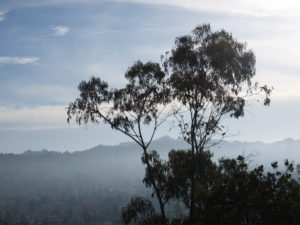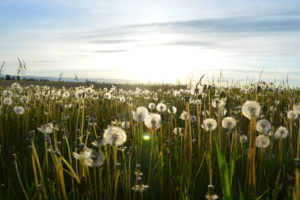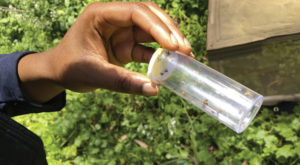While there are many invasive plants that have taken a toll on habitats in the Bay Area, there are several compelling reasons to worry sooner rather than later about Limonium ramosissimum, Algerian sea lavender. The most important reason, says biologist and San Francisco State University graduate student Gavin Archbald, is that the plant seems to prefer disturbed areas of high marsh habitat, which includes restored habitat. Restoration, after all, implies disturbance. Planned restoration projects in the pipeline could increase the Bay’s wetland acreage by 50 percent in coming years, and Archbald warns that if we aren’t vigilant, these projects could become magnets for this aggressive weed.
Fortunately, the plant has only a toehold right now, so it’s still possible to stop it from becoming a nightmare in the high marsh edges like another wetland plant, perennial pepperweed, has done.
After the initial discovery of sea lavender in the North Bay in 2006, Archbald spent three years looking for the plant and found 25 populations around the Bay, mostly on the west side, totaling just 3.7 acres. The largest population was in Sanchez Marsh in Burlingame in an area that was restored in 1987. The population is thriving at the base of a storm drain, which suggests that the seeds came down the watershed from home gardens.
In 2010, the plant was listed by the Bay Area Early Detection Network (BAEDN), a collaboration of land managers and citizens working to detect and provide rapid response to infestations of invasive species. To join BAEDN and learn how to report a plant, go to baedn.org. There are four kinds of Limonium found in the Bay’s marshes, and one of them is native. If you find a plant but are unsure of its species, submit a photo at baedn.org, or contact Archbald at gavinarchbald@gmail.com.

.jpg)



